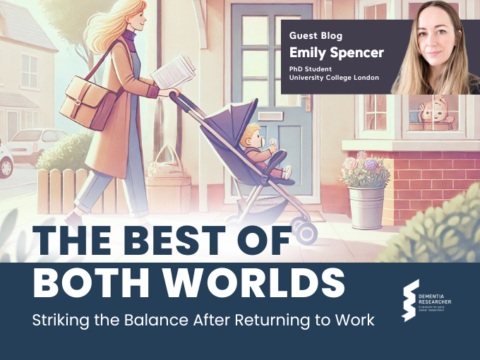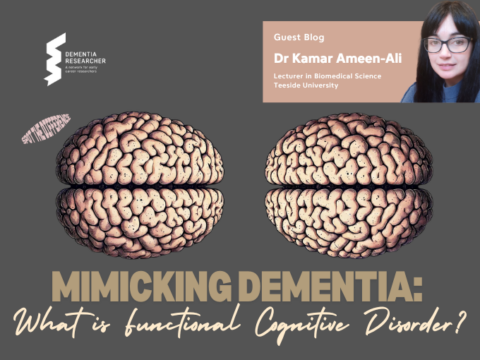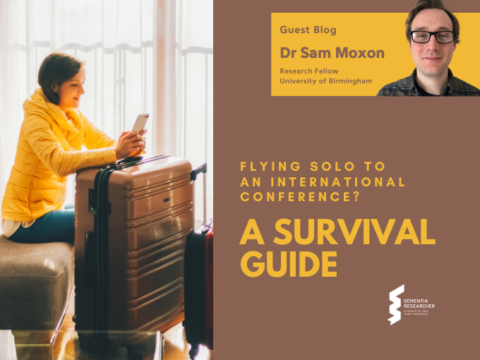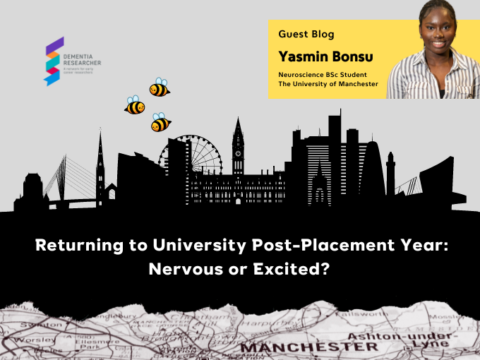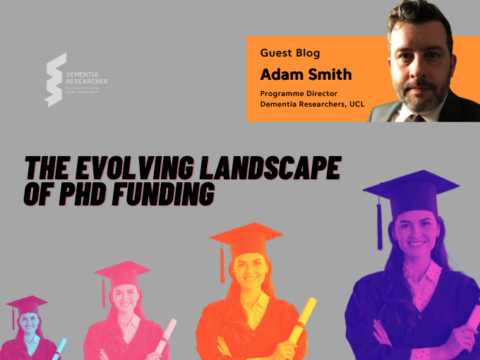Today’s musings come care of a good friend who was off to present at a patient engagement day. The morning of, she relayed to me the variety of abilities in her particular group when it came to presenting to a lay audience. Apparently they had a comms expert come in who told them, in no uncertain terms, how awful they all were. I queried why so many people might be terrible at this and she said she thought it was because it’s something that scientists don’t do on a regular basis, so we don’t practice. I’m sort of on board with this explanation. But at the same time the basics are common sense. Don’t use long words, don’t put up big, complex graphs. Obviously that would result in a really short piece today and I know this is your 10-minute queuing for lunch blog so I’ll ramble a bit longer…
Now. I’m going to preface all this advice with the fact that I have actually never presented to a lay audience. I’ve had to write a ton of lay summaries for various grants and reports and so forth and lay summaries are one of the few things I’m willing to brag about. I’m quite good at them. Yes, they take a bit of work and a bit of thought but they’re not that hard once you get into the swing of things. But I’ve never actually presented my work to a non-scientific audience so you may have to take all the following with a pinch of salt.
I do, however, have experience on the receiving end of two of these talks. I have a neuromuscular disease I inherited from my dad. We were at the annual conference for said disease and they had a couple of scientists come in and talk. They were great talks. For me. At the end of the second one dad, who was not a scientist, leant over and said ‘I assume you understood all of that?’. Over lunch he then introduced my skills as a researcher to the table and had me translate what the people had been working on. It turns out nobody had understood anything, they’d just politely watched the slides drift by and clapped at the end.
And it was obvious why. With the exception of toning down the number of graphs both presenters had pretty much given a talk they might give at a lab meeting or a small conference. They continually referred to the type of imaging modality they were using or the specific adenovirus they had chosen. They hadn’t answered the most important question patients always have when it comes to these things. What are you doing that might help me or people like me?
When writing grants and things there’s always a section on impact and for grants that are on diseases the idea here is that you should basically say you’re going to cure whatever it is that you’re working on. This may or may not be true. You may be working on an absolutely tiny bit of a tiny pathway, but the point is that by understanding that tiny bit of that tiny pathway we might be able to, one day, in the distant future, do something about this disease.
So that’s where you need to start. You need to start by saying ‘here is the problem that I know you have’.
For example, if you work on the mechanisms of tau propagation in disease you need to be able to get to the point where people understand why that’s an important thing to be studying. You might start by talking about the disease in general but don’t be too miserable, remember these are patients or family, and highlight why it’s important to find out more about it. A lot of the things we study don’t have cures so if you work on something that’s not a drug you need to tell them why. Understanding the mechanisms of disease basically gives us a new ‘in’ to novel drugs.
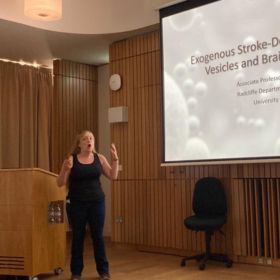
Should you use your hands when presenting? The simple answer is: Do what comes naturally. Use your hands as you would in conversation, though adapted to your environment.
But how do you get to that point? If you are given the chance of using a powerpoint then pictures are a lifesaver. A picture paints a thousand words, or whatever the quote is. And if you have to use words, and I cannot stress this enough, use small ones. It’s not patronizing, it’s understanding. Yes, you might have to use words like tau eventually but ease your way into it. You don’t need to say ‘protein’ when you can say ‘molecule’, you don’t need to say ‘neuron’ when you can say ‘brain cell’.
Once you’re off describing what you’re doing the next thing you need to remember is that this isn’t a scientific audience. Wowing them with the one thousand and one heat maps and scatter plots and those weird UMAP graphs that even I do not understand is not going to be helpful. Where a normal talk might be 20% intro, 10% methods and 70% results, this should be more 50% intro, 25% methods and 25% results.
If you’ve introduced your topic well, then you’ve got them to the stage where they understand that studying tau propagation is actually a really useful thing to do with all their bake sale and fun run money. Now you have to tell them how you’re going to do it. Again, take your time here. More pictures, more small words. Even a video if you can get away with it. Remember, what you do in the lab is totally routine to you and totally alien to 95% of the rest of the world. Growing mini brains in little wells sounds very Hollywood so explain how it works and why it’s important to use that method and not anything else. If you’re using patient samples, or making cells from patient groups, highlight this here because it shows them how they can get involved and why their contribution is really important to your work. Show them how you process their samples, or how you turn a skin cell into a neuron step by step. This is the bit that is genuinely really interesting to patients.
At last, you’ve got to the results section. Here is where you need to think about what you’re doing before you present. Sometimes you might not even have time to present results. Some of these patient days are simply to give them an idea of what you do, in which case no data presentation is needed. Just tell them why you’re doing what you’re doing, how you’re doing it and how it might benefit them. If you do have space for results keep them minimal, simple, easy to understand and relevant to the story. For example, if we’re still on the tau story you might be looking at how tau from neurons affects microglial migration. So you’ve told them why that’s important, you’ve shown them how you grow neurons and how you grow microglia. You’ve explained how microglia move and you’ve told them all about the particular way you measure this. Then you show them one nice graph and say ‘Look! When we add this particular molecule, these cells move differently’ and then, most importantly, you tell them again why this is important.
There’s some old school speech writing thing which says you have to tell people what you’re going to tell them, tell them, then tell them what you’ve told them.
This doesn’t always work for scientific presentations and can feel a bit cumbersome but for a lay audience it’s useful to repeatedly bring things back to the disease they are currently experiencing to make everything you’re saying relevant.
The last thing you need to do before you take this to your crew of local patients and relatives is find someone to practice on. Do not practice it on your lab mates, they know what you do and are not a helpful audience. Don’t even find people down the corridor who work on the gut, they’re still scientists so if you use shiny words like ‘seven tesla’ or ‘hierarchical clustering’ they will understand you. My go to for these things is the research nurse in our office, who has no idea what I do most of the time, and my mum, who is not a scientist. If both of them understand the piece I’ve written, or what I’ve told them, then it’s worked well.
Finally, remember these people genuinely want to hear about research and will be really excited about things that you find very mundane and everyday. I know you hate your iPSCs, they’re nothing but a pain in the posterior and require way too much feeding and ruin your weekends and then die for no good reason BUT…you built a brain cell from a skin cell, and that’s actually pretty cool when you sit back and think about it. So all that excitement you had when you wrote your first grant, or when you started your PhD, way back before you became tired and bitter, all of that needs to come across when you present so that they understand that your work means something. Because to them, it really does. And because of them, maybe it should mean something to you too.
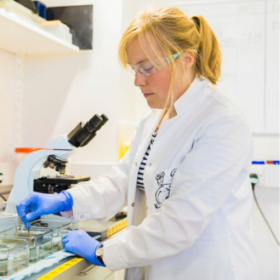
Dr Yvonne Couch
Author
Dr Yvonne Couch is an Alzheimer’s Research UK Fellow at the University of Oxford. Yvonne studies the role of extracellular vesicles and their role in changing the function of the vasculature after stroke, aiming to discover why the prevalence of dementia after stroke is three times higher than the average. It is her passion for problem solving and love of science that drives her, in advancing our knowledge of disease. Yvonne shares her opinions, talks about science and explores different careers topics in her monthly blogs – she does a great job of narrating too.

 Print This Post
Print This Post
